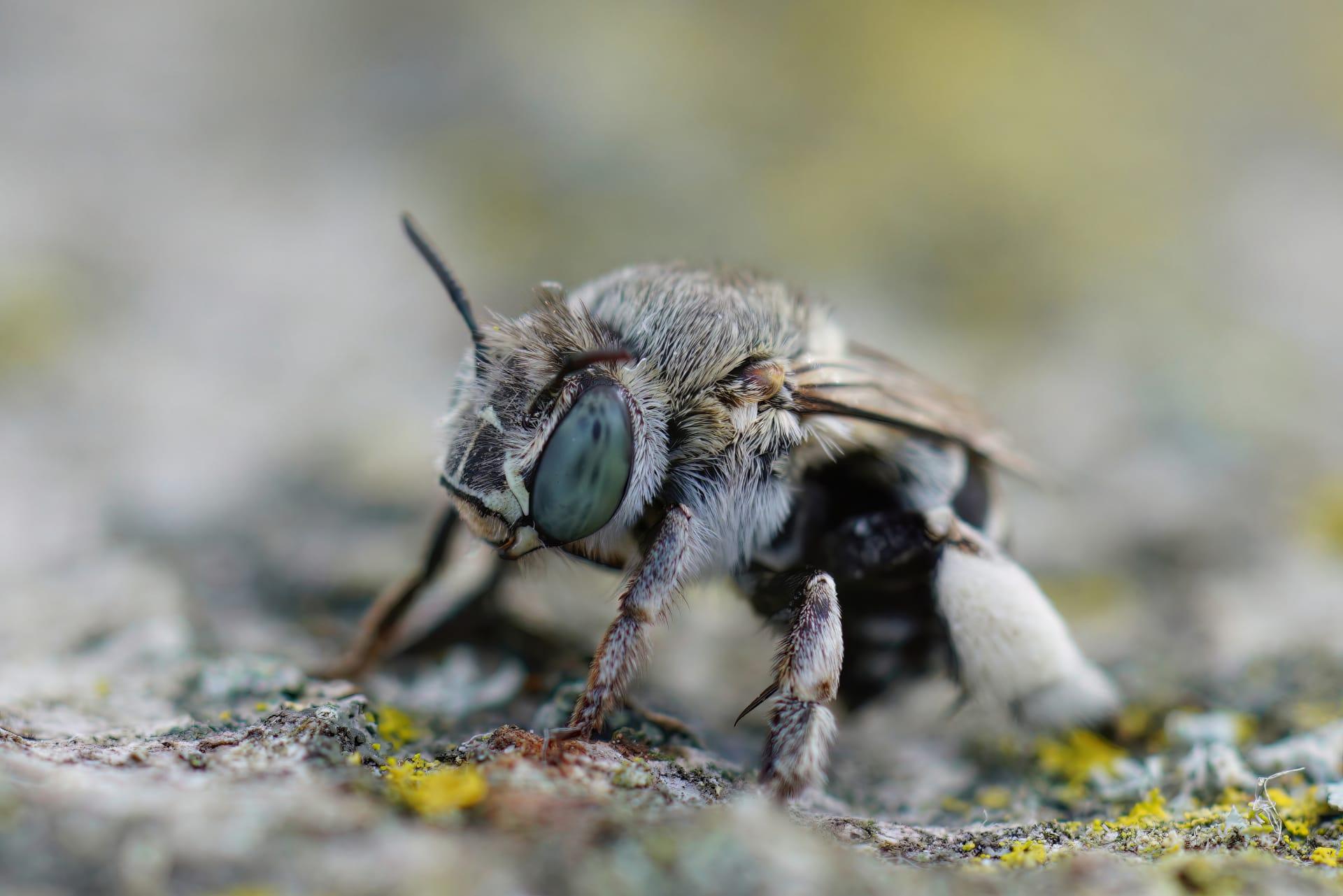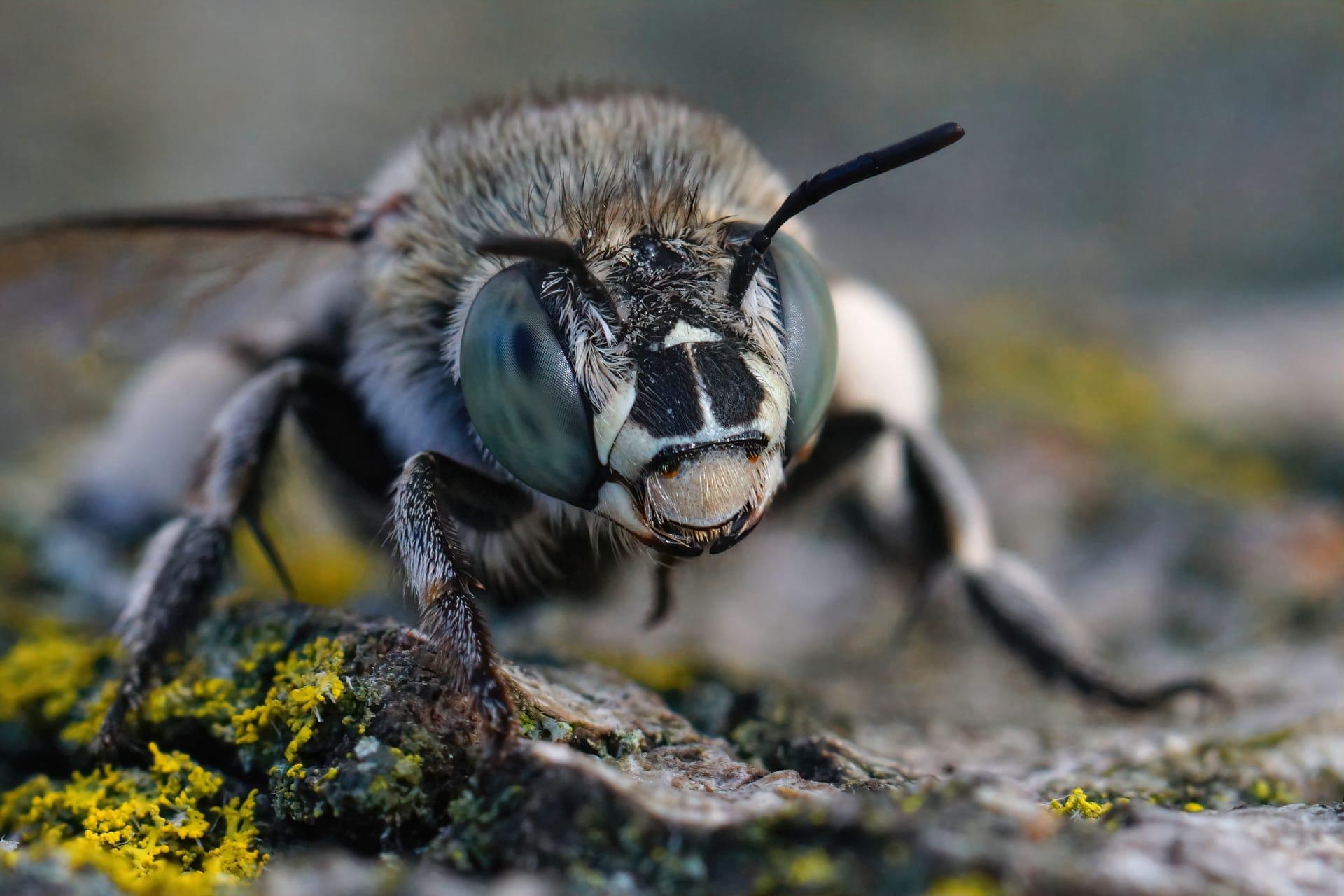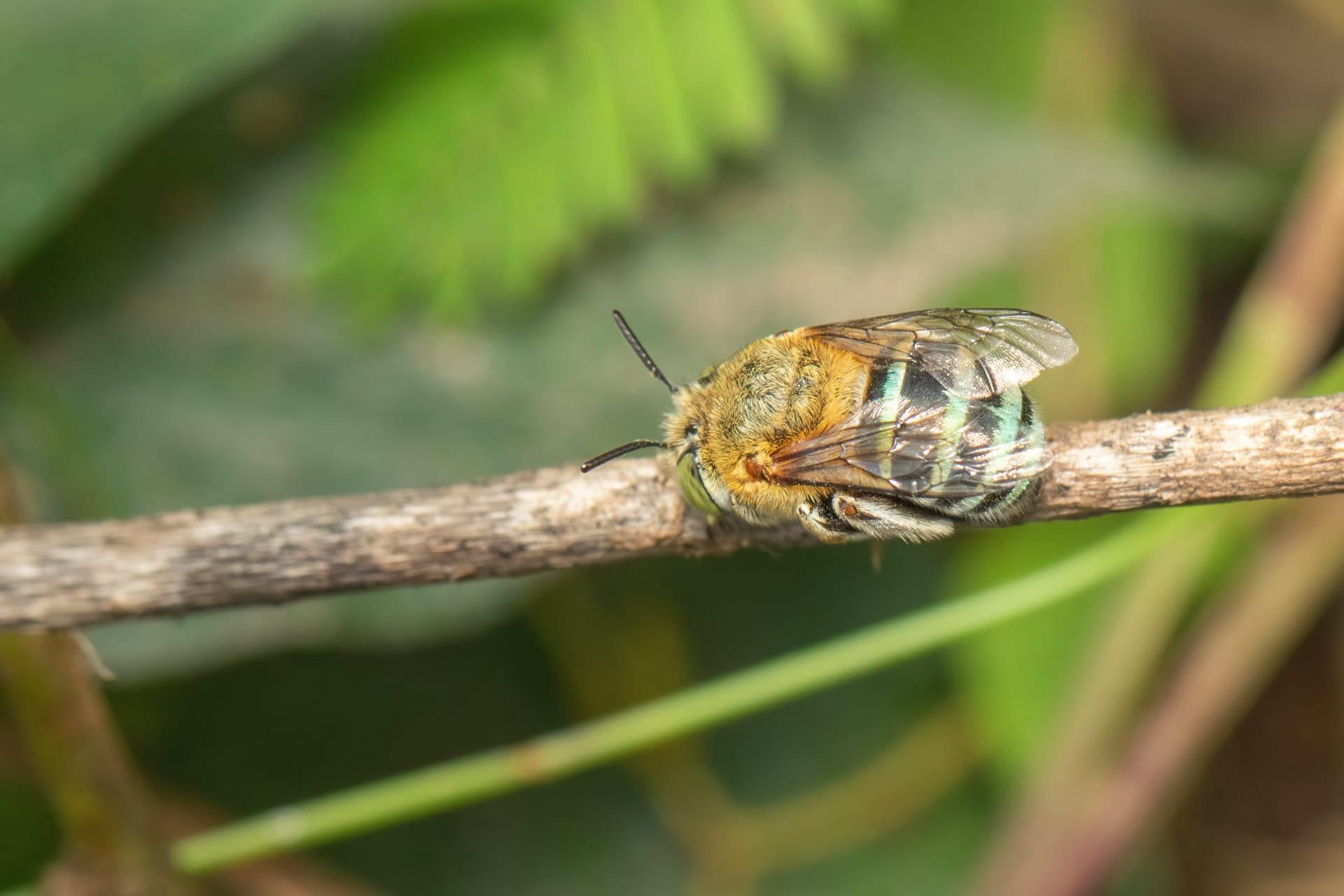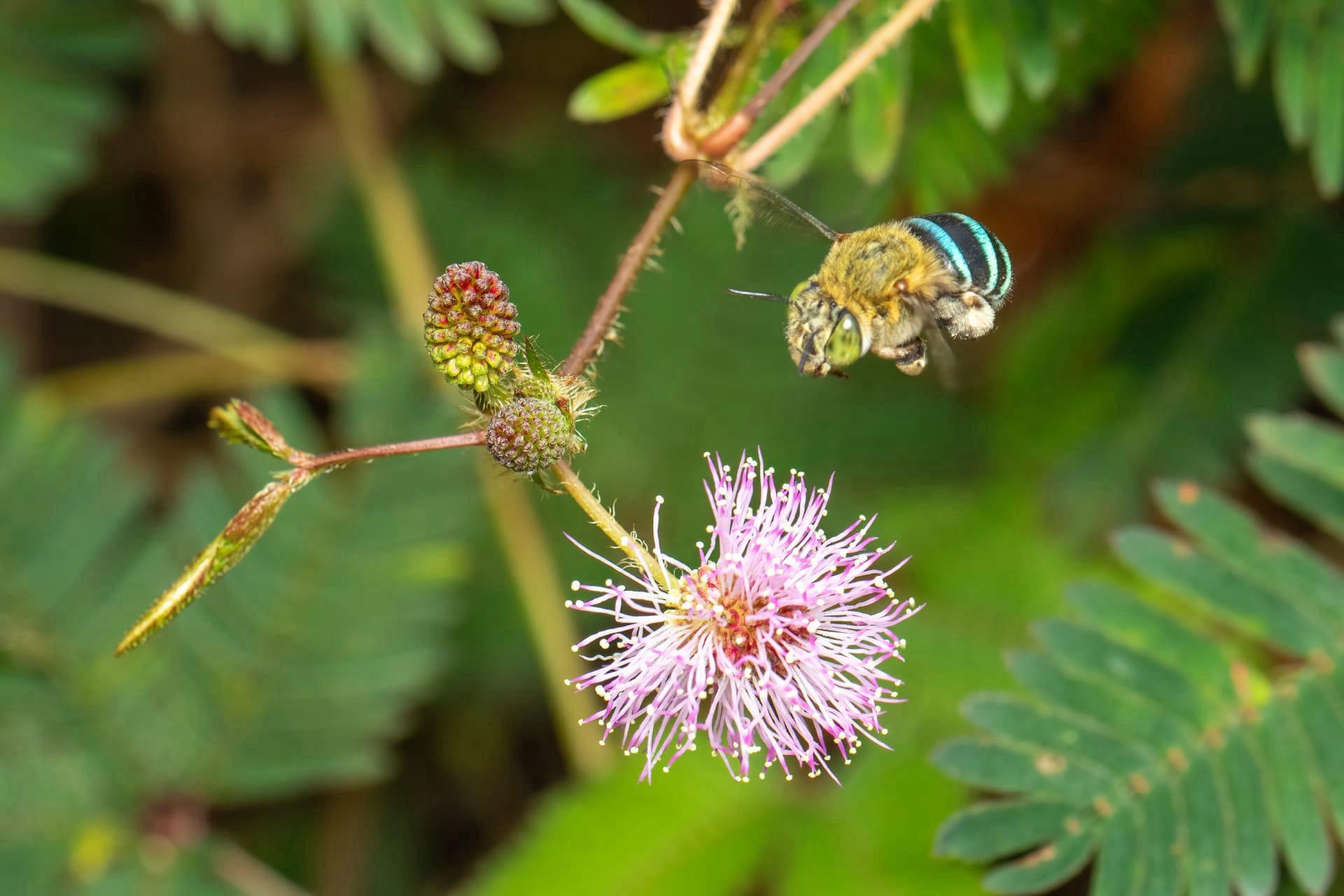Blue Banded Bee Trivia
- Home /
- Trivia Question /
- Animal /
- Blue Banded Bee Trivia
1
Question: What distinguishes the blue banded bee from other bee species in terms of appearance?
Answer: Blue banded bees are renowned for their striking coloration. They possess vibrant blue and black stripes across their abdomens, a unique feature among bees. These bees measure about 11 millimeters in length, and males typically have five blue bands, while females have four. Their furry, golden thorax contrasts beautifully with the blue bands, making them visually distinct from more common bee varieties.
Question: How do blue banded bees contribute to pollination differently than other bees?
Answer: Unlike typical bees that collect pollen on their legs, blue banded bees employ a technique known as 'buzz pollination'. They grab onto a flower and rapidly vibrate their flight muscles, causing pollen to be dislodged and collected on their bellies. This method is particularly effective for plants like tomatoes and eggplants, making these bees crucial for pollinating certain types of crops that other bees cannot.

2
Question: Is it true that blue banded bees are more aggressive than other bee species?
Answer: Contrary to common belief, blue banded bees are relatively docile. They are solitary bees, meaning they do not live in large colonies or have a queen to protect. This lifestyle results in less aggressive behavior compared to social bees like honeybees. Their stings are rare and typically occur only if they feel threatened.
Question: Do blue banded bees produce honey like honeybees?
Answer: Blue banded bees do not produce honey. They are solitary bees and lack the social structure necessary for honey production, which is a trait of honeybees living in colonies. Instead, blue banded bees gather nectar and pollen solely for feeding themselves and their offspring.

3
Question: What is the lifespan of a blue banded bee?
Answer: Blue banded bees have a relatively short lifespan. The adults typically live for around 40 days. During this time, they focus on mating and the females dedicate themselves to creating and provisioning their nests with nectar and pollen for their offspring.
Question: Where do blue banded bees typically build their nests?
Answer: These bees often nest in burrows in clay-rich or sandy soil. They also utilize pre-existing holes in wood or even in mortar joints in brick walls. The female bee constructs individual cells in her nest, where she lays eggs and provides a supply of pollen and nectar for the developing larvae.

4
Question: What is the mating behavior of blue banded bees?
Answer: Blue banded bees have a unique mating ritual. Males congregate and cling to plant stems overnight, and during mating season, they release a pheromone to attract females. After mating, the females alone handle the tasks of nest-building and offspring care.
Question: How do blue banded bees interact with their environment?
Answer: These bees play a crucial role in the ecosystem by pollinating native Australian plants, particularly those with deep or tubular flowers. Their buzz pollination is also vital for the cultivation of certain fruits and vegetables. Furthermore, their nesting habits contribute to soil aeration.

5
Question: Are blue banded bees endangered?
Answer: Blue banded bees are not currently classified as endangered, but like many bee species, they face threats from habitat loss, pesticides, and climate change. Their specialized pollination methods make them important for biodiversity, and their conservation is crucial for the health of ecosystems.
Question: What can people do to support blue banded bees?
Answer: To support these bees, planting native flowering plants, particularly those that benefit from buzz pollination, is beneficial. Avoiding pesticides, creating bee-friendly gardens with nesting sites, and supporting conservation efforts are other ways to help preserve blue banded bees and their natural habitats.